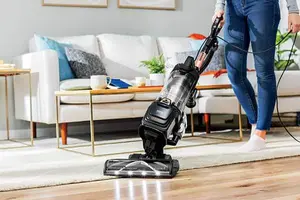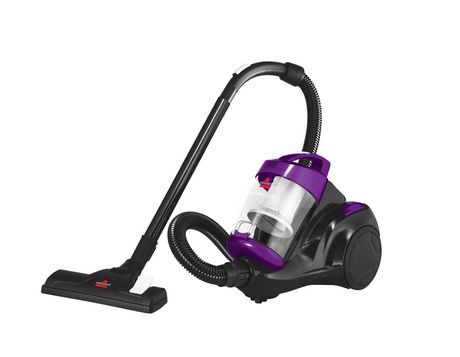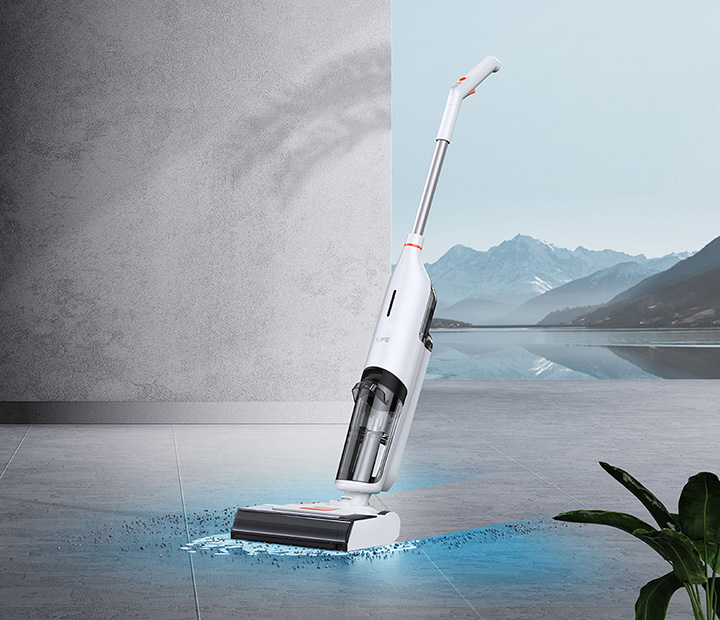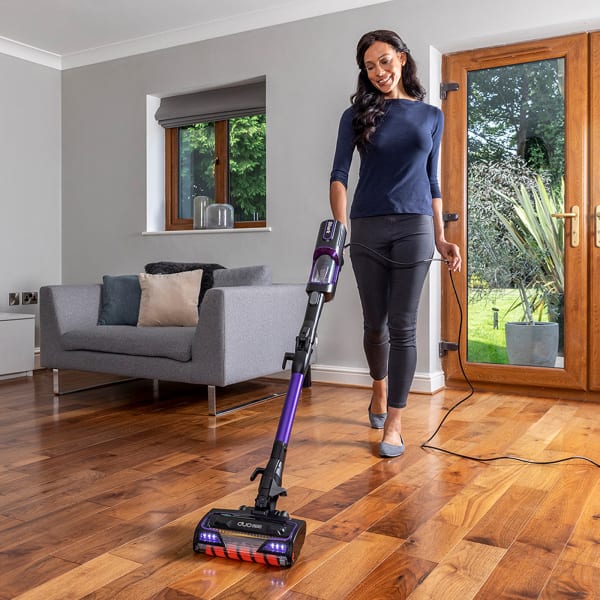The Vacuum Vanguard: Unveiling the Secrets of Vacuum Cleaner Mastery
The comprehensive guide to vacuum cleaners explores the evolution and types of these essential household appliances. Beginning with a historical overview, the article covers upright, canister, stick, robot, and handheld vacuum cleaners. It delves into bagged vs. bagless models, key features like HEPA filters and adjustable height settings, and maintenance tips such as emptying dustbins and cleaning filters. The guide concludes with a discussion of recent technological advancements, including smart connectivity and laser mapping. Notable vacuum cleaner models, such as the Dyson V11 Absolute and iRobot Roomba i7+, are highlighted for their features and popularity. The article emphasizes the importance of choosing a vacuum that suits specific cleaning needs and provides regular maintenance for optimal performance.
Explore the World of Vacuum Cleaners and Enhance Your Cleaning Experience

Vacuum cleaners have become an indispensable tool in maintaining clean and healthy living spaces. From removing dirt and debris to combating allergens, these devices play a crucial role in our daily lives.
A vacuum cleaner, often simply referred to as a vacuum, is a household appliance designed for the purpose of cleaning floors and other surfaces by creating a partial vacuum to suck up dust, dirt, and debris from various surfaces. It operates on the principle of suction, where a pump creates a low-pressure zone within the vacuum cleaner, causing air to rush in along with particles from the surface being cleaned.
A Brief History of Vacuum Cleaners
The concept of a vacuum cleaner dates back to the 19th century. The first manually operated vacuum cleaner was invented by Ives W. McGaffey in 1869, and it operated through a hand-cranked bellows system. The design evolved over the years, leading to the introduction of electric vacuum cleaners in the early 20th century. Today, vacuum cleaners come in a variety of styles and technologies, catering to diverse cleaning needs.

Types of Vacuum Cleaners
a. Upright Vacuums:
- Known for their powerful suction and ease of use.
- Ideal for larger carpeted areas.
- Some models come with additional features like attachments for above-floor cleaning.
b. Canister Vacuums:
- Characterized by a separate canister and wand.
- Versatile, suitable for both carpets and hard floors.
- Often equipped with a range of attachments for different cleaning tasks.
c. Stick Vacuums:
- Lightweight and easy to maneuver.
- Suitable for quick cleanups and light-duty tasks.
- Battery-powered for cordless convenience.
d. Robot Vacuums:
- Autonomous vacuum cleaners equipped with sensors and navigation technology.
- Can be programmed or controlled via smartphone apps.
- Ideal for daily maintenance cleaning.
e. Handheld Vacuums:
- Compact and portable.
- Perfect for spot cleaning, car interiors, and small messes.
- Often cordless for increased convenience.
Key Components of a Vacuum Cleaner
1. Motor:
- The heart of the vacuum cleaner, the motor provides the suction power necessary for effective cleaning.
- Motors can be found in various sizes and power levels depending on the type and model of the vacuum.
2. Fan:
- Connected to the motor, the fan helps create airflow by drawing in air through the vacuum cleaner.
- It contributes to the suction force that lifts dirt and debris from surfaces.
3. Filter:
- Filters are crucial for trapping particles and preventing them from being released back into the air.
- High-Efficiency Particulate Air (HEPA) filters are common for capturing small allergens.
4. Dustbin or Bag:
- The collected dirt and debris are stored in either a dustbin (bagless models) or a disposable bag.
- Bagless vacuums typically have a dustbin that can be emptied, while bagged models require periodic bag replacement.
5. Hose and Nozzle:
- The hose connects the cleaning nozzle to the main body of the vacuum.
- The nozzle, often equipped with brushes or rollers, is responsible for direct contact with the surface being cleaned.
6. Handle and Controls:
- The handle provides a grip for maneuvering the vacuum cleaner.
- Controls, which can include power switches and adjustment settings, are typically located on the handle or the body of the vacuum.
Maintenance and Care
- Emptying the Dustbin/Changing Bags:
- Regularly empty dustbins or change bags to maintain optimal suction.
- Cleaning Filters:
- Wash or replace filters as recommended by the manufacturer.
- Ensures efficient filtration and airflow.
- Checking for Blockages:
- Periodically inspect hoses, brushes, and other components for clogs.
- Clear any obstructions to maintain peak performance.
- Belt and Brush Roll Maintenance:
- Inspect and replace belts and brush rolls as needed.
- Improves the vacuum's ability to pick up dirt and debris.
Recent Technological Advancements
- Smart Connectivity:
- Some vacuums can be controlled via smartphone apps or voice commands.
- Laser Mapping and Navigation:
- Advanced robot vacuums use lasers for precise mapping of the cleaning area.
- Enhances navigation and coverage.
- Self-Emptying Bins:
- High-end robot vacuums can empty their dustbins automatically into a larger container.
Bagged vs. Bagless Vacuums:
- Bagged:
- Require replacement bags.
- Generally offer better containment of dust and allergens.
- May have higher ongoing costs due to purchasing replacement bags.
- Bagless:
- Feature dust bins that can be emptied.
- Cost-effective in the long run, as there's no need to buy replacement bags.
- Filters may need periodic replacement for optimal performance.

How to use a vacuum cleaner
Using a vacuum cleaner is a straightforward process, but it's important to follow the specific instructions provided by the manufacturer in the user manual. Here's a general guide on how to use a typical upright or canister vacuum cleaner:
Using an Upright or Canister Vacuum Cleaner:
1. Prepare the Area:
- Clear the floor of any large debris or objects that could obstruct the vacuum cleaner.
2. Plug In the Vacuum:
- Locate a power outlet near the area you want to clean and plug in the vacuum.
3. Adjust the Height Setting:
- If your vacuum cleaner has adjustable height settings, set it according to the type of flooring you are cleaning. Higher settings are suitable for carpets, while lower settings are ideal for hard floors.
4. Attach Necessary Accessories:
- If your vacuum cleaner comes with attachments, such as a crevice tool or brush, attach them as needed for specific cleaning tasks.
5. Turn On the Vacuum:
- Switch on the vacuum cleaner using the power button. Some models may have additional controls for suction power; adjust as necessary.
6. Start Vacuuming:
- Begin vacuuming from the farthest corner of the room and work your way toward the exit. Use slow and steady strokes, overlapping slightly to ensure thorough cleaning.
7. Clean Edges and Corners:
- Use the vacuum cleaner's hose or attachments to clean along baseboards, edges, and corners where the main vacuum head might not reach.
8. Empty the Dustbin or Replace the Bag:
- If you have a bagless vacuum, empty the dustbin when it's full. For bagged models, replace the bag according to the manufacturer's instructions.
9. Turn Off the Vacuum:
- Once you've finished vacuuming the entire area, turn off the vacuum cleaner and unplug it from the power source.
10. Maintenance:
- Regularly clean or replace filters, check for any blockages, and inspect the brush roll or beater bar for tangled hair or debris. Refer to the user manual for specific maintenance instructions.
11. Storage:
- Wrap the power cord around the designated storage hooks or wrap it in a way that avoids damage. Store any attachments in their designated spaces.
Top Vacuum cleaners
1. Dyson V11 Absolute:
- Known for powerful suction and intelligent cleaning technology.
- Features an LCD screen that displays performance information.
- Offers a high-capacity battery for extended cleaning sessions.
2. iRobot Roomba i7+ (plus):
- A top-tier robot vacuum with smart mapping and navigation capabilities.
- Known for its self-emptying dustbin, reducing the frequency of manual maintenance.
- Compatible with smart home systems for voice control.
3. Shark Navigator Lift-Away Professional NV356E:
- An upright vacuum with a lift-away canister for versatile cleaning.
- Known for strong suction and anti-allergen complete seal technology.
- Comes with a HEPA filter for trapping dust and allergens.
4. Miele Complete C3 Marin Canister Vacuum:
- Renowned for its high-quality build and powerful suction.
- Equipped with a six-stage variable speed motor.
- Comes with various attachments for different cleaning tasks.
5. Bissell CrossWave Pet Pro:
- Combines vacuuming and mopping in one machine, suitable for multi-surface cleaning.
- Specifically designed for homes with pets, effectively tackling pet hair and messes.
- Features a tangle-free brush roll.
6. Dyson Ball Animal 2:
- Designed for homes with pets, with powerful suction and a tangle-free turbine tool.
- Features a self-adjusting cleaner head for optimal contact on different floor types.
- Radial root cyclone technology for efficient particle capture.
7. Hoover WindTunnel T-Series Rewind Plus UH70120:
- A budget-friendly option with strong suction power.
- Features WindTunnel technology for effective dirt and debris removal.
- Comes with a retractable cord for easy storage.
8. Eufy by Anker, BoostIQ RoboVac 11S (Slim):
- A cost-effective robot vacuum with strong suction power.
- Known for its slim design, making it suitable for low-clearance furniture.
- Offers a variety of cleaning modes.

FAQ
- What does vacuum mean?
- How do you use vacuum?
- Why do people vacuum?
- What is an example of a vacuum?
What does vacuum mean?
- In a general sense, a vacuum refers to a space devoid of matter, particularly air or gas. In physics, a vacuum is a space with no matter particles and a lower pressure than its surroundings.
How do you use vacuum?
- The term "vacuum" can have different meanings depending on the context. If you are referring to a vacuum cleaner, it is used for cleaning floors and surfaces by creating suction to remove dirt and debris. In a scientific or industrial context, vacuum systems are used to create a low-pressure environment for various purposes, such as in laboratories or manufacturing processes.
Why do people vacuum?
- People vacuum primarily to maintain cleanliness in their living or working spaces. Vacuum cleaners are effective tools for removing dust, dirt, pet hair, and other debris from floors and carpets. Regular vacuuming helps improve indoor air quality, reduces allergens, and contributes to a healthier environment.
What is an example of a vacuum?
- An example of a vacuum is the space inside a vacuum cleaner. When the vacuum cleaner is turned on, it creates a low-pressure zone, and air along with dirt and debris is drawn into the vacuum, allowing for effective cleaning. In physics, outer space is often considered a near-perfect vacuum because it has an extremely low density of particles. Additionally, vacuum chambers in scientific laboratories are examples of controlled environments with reduced pressure.
Vacuum cleaners have come a long way since their humble beginnings, evolving into technologically advanced devices that cater to various cleaning needs. By understanding the different types, features, and maintenance requirements, you can choose the right vacuum cleaner to keep your home clean and healthy. Whether you opt for a traditional upright model or embrace the convenience of a robot vacuum, the key lies in regular maintenance and utilizing the right attachments for a thorough clean.



